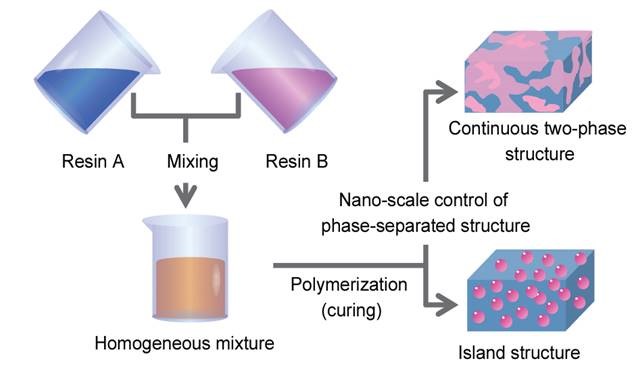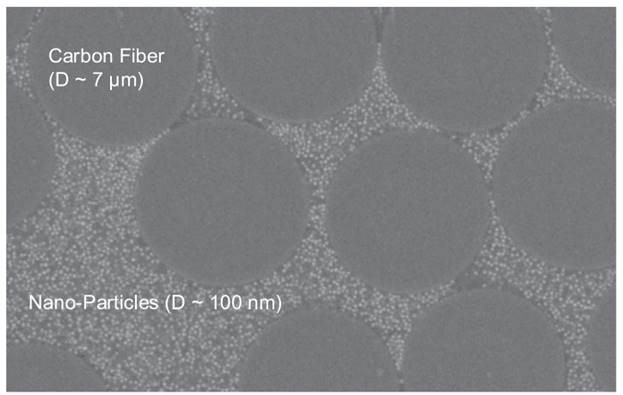WHAT IS “NANO-CARBON”
November, 2021
blog
In many instances, fancy terminology is employed for marketing purposes when it comes to product offerings. Regrettably, these terms often lead to misunderstandings due to their vague definitions. Take, for instance, the case of “Nano-Carbon” rods, which are asserted to possess greater strength than conventional carbon fiber variants. However, the reality is that “nano-carbon” is a misleading concept since carbon fiber does not exist on a nano-scale. The diameter of carbon fiber measures approximately seven microns, which is more than 70 times larger than the nano-scale range. Although certain carbon materials, such as Graphene or Nanotubes, exhibit nano dimensions, they are not utilized in fishing rods due to their exorbitant costs or production limitations, without offering substantial advantages to the rods.
NANOALLOY® RESIN
Instead of fixating on Nano-carbon, Toray has recently pioneered a fresh technology called Nanoalloy®, which finds application in the fabrication of composite fishing rods. But what precisely is Nanoalloy®? Nanoalloy® technology involves the fusion of two distinct polymers to create a novel polymer. The crux of this technology lies in the even dispersion of nanoparticles of polymer A into polymer B, as depicted in Figure 1. Reports indicate that this hybrid polymer enhances the impact resistance of prepregs (sheets of carbon fiber impregnated with resin). However, nanoalloy resin’s mere application does not bestow magical high-performance prepregs upon fishing rods.

TORAY recognized the importance of carbon fibers in this context. The TORAYCA® T1100G fiber, a novel high-performance, high-strength carbon fiber, is pivotal in this new product preparation.
Paired with nanoalloy resin, TORAY achieved a 13% surge in prepreg strength compared to conventional prepregs (comprising T800 carbon fiber + standard resin). Thus, the realization of a high strength prepreg necessitates the coupling of Nanoalloy® with high-performance carbon fiber, exemplified by T1100G. Deploying Nanoalloy® alongside lower-strength carbon fiber will not yield the desired outcomes, while Nanoalloy® resin amplifies impact resistance within the prepregs. This groundbreaking material has paved the way for the evolution of advanced high-strength fishing rods, and their performance in angling is awaiting further assessment.
NANO-SILICA RESIN
‘Nano-alloy’ isn’t the sole technology employing the somewhat ubiquitous “Nano” moniker. The term “Nano-carbon” also extends to the presence of nano-silica particles in carbon fiber fishing rods. Silica, or silicon dioxide, commonly found in sand and quartz, serves as a prevalent filler in polymers to enhance robustness. 3M, a global adhesive technology leader, recently introduced an innovative resin that employs nano-sized silica spheres as a uniform, non-abrasive filler amidst carbon fibers. These nano-silica particles bolster the resilience and modulus of the base resin, albeit with an accompanying increase in density and weight.

Nano-silica resin holds allure for fishing rod manufacturers. By combining nano-silica resin with high-strength carbon fiber, rods with enhanced strength can be crafted, mirroring the capabilities of nanoalloy resin. Furthermore, research illustrates that supplementing regular fiber and resin with 20% nano-silica can heighten the durability of blanks. However, it remains essential to note that the attributes of carbon fiber, such as upgrading from a 24-ton to a 46-ton variety, wield a greater influence than nano-particles in enhancing the bond between carbon fiber and resin.
IN CONCLUSION
The frequent use of the term “nano-carbon” is fundamentally unrelated to genuine carbon fiber characteristics. Cutting-edge technologies like nanoalloy resin and nano-silica fillers have emerged to create more robust fishing rods. Nonetheless, their efficacy hinges on their conjunction with high-performance carbon fibers to manifest comprehensive effects. Within the system, nanoparticles, akin to additives, are not standalone panaceas.
Dr. Wang Chen (Ph.D.)
Research Scientist and Engineer
Temple Reef
24ᵗʰ Nov 2021

